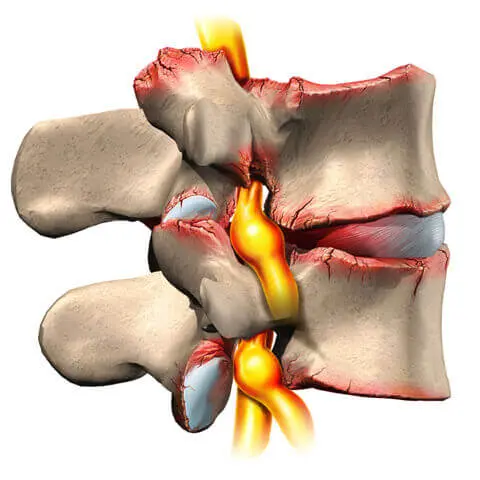What Is Foranimal Stenosis?
The foraminal passageways, through which important nerves branch away from the spinal cord and travel to other areas of the body, are particularly susceptible to damage and decline. Foranimal Stenosis occurs when these canals become obstructed or narrowed. Usually, foraminal stenosis becomes noticeable when a nerve becomes compressed, which leads to pain, discomfort and other irritating complications.
The age-related decline of the vertebral column is the primary cause of foraminal stenosis. However, many factors can exacerbate or accelerate the narrowing of the foraminal canals, including: bone spurs, herniated discs, arthritis, sudden injuries and more.
The symptoms of foraminal stenosis vary depending on which area of the spinal column experiences problematic narrowing (cervical, thoracic or lumbar), as well as the severity of the problem.

Symptoms of foraminal stenosis are also associated with many other disorders and conditions, it is important to seek a comprehensive and accurate diagnosis right away. At St. Louis Pain Consultants, we are committed to helping you accurately identify the underlying cause of your pain.
Common Foranimal Stenosis Symptoms
What to Expect
If you are encountering foraminal stenosis, you are not alone. You do not have to accept your pain as an unalterable aspect of your daily life. Through personalized, patient care, the team of spine experts at St. Louis Pain Consultants will help alleviate your symptoms of pain, improve your health, well-being and quality of life.
Every patient is different and we work with each one to establish an individualized, comprehensive plan, to achieve maximum relief. Pinpointing the source of pain and utilizing a targeted treatment plan makes our approach highly successful.
With the help of today’s technology, our pain management specialists accurately diagnose, target, and relieve the source of pain, to help you return to an active lifestyle.
Diagnostic Options
During your initial consultation, one of pain specialists will carefully and compassionately evaluate your medical history, current symptoms and physical state. Then, we will work with you to design a treatment plan that meets your unique needs and health history. Before we can recommend any treatment options, we must first diagnose the cause of your pain. The following tests are typically performed in order to diagnose an foranimal stenosis:
- X-rays
- MRI
- CT Scan
- MRI/CT Scan with Dye
Once we diagnose foranimal stenosis, we will create a treatment plan to reduce the symptoms of pain, generally with a non-invasive treatment plan.